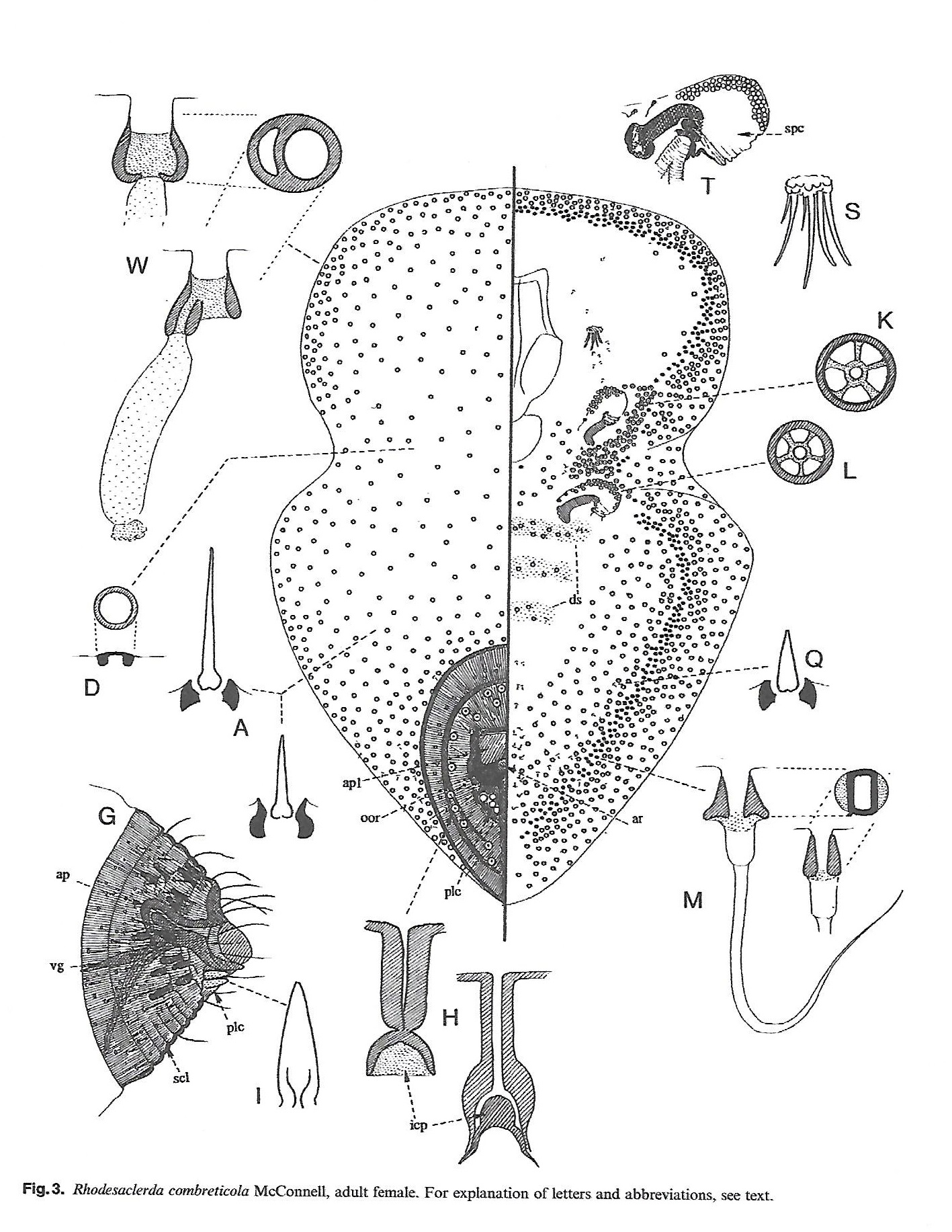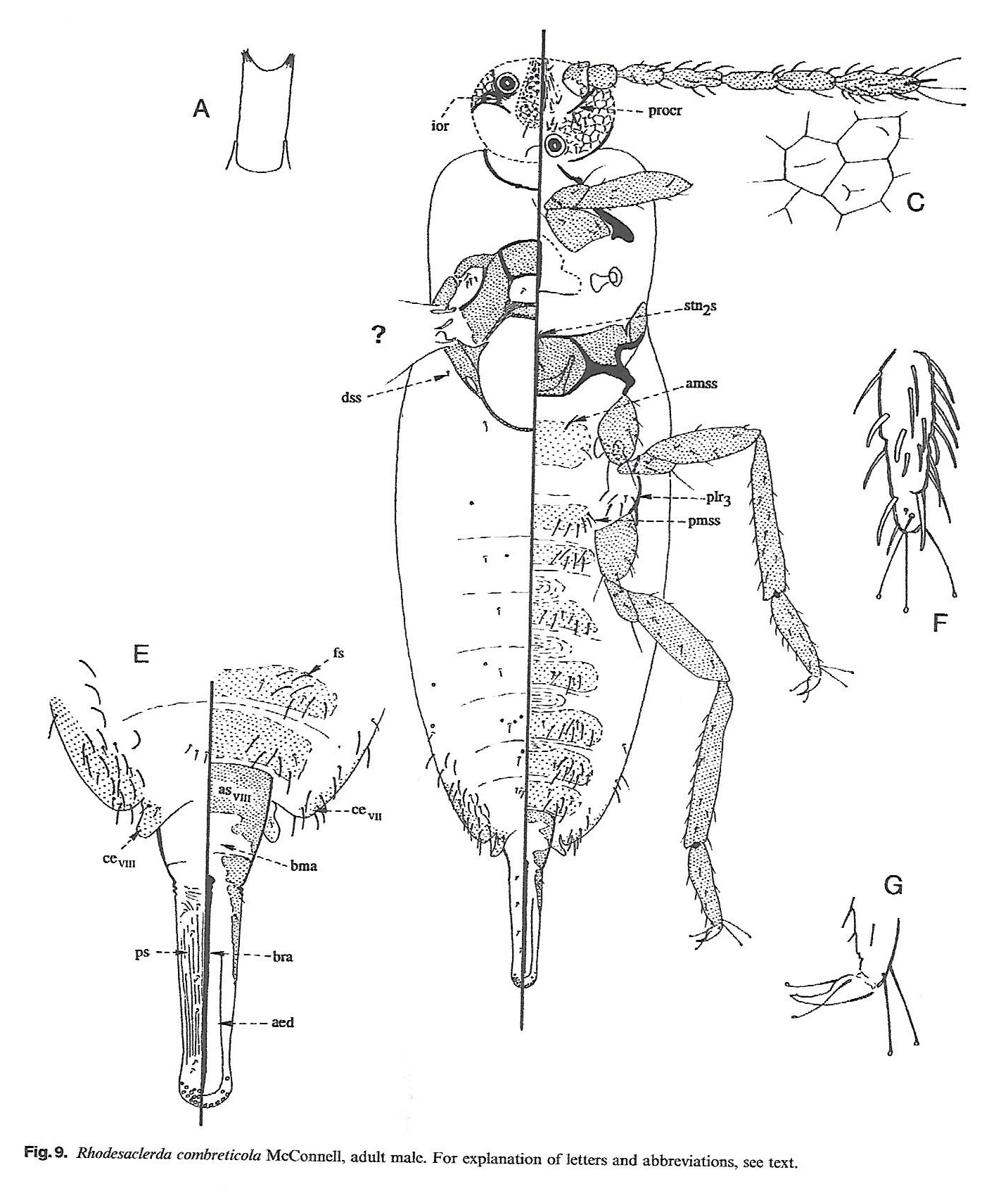Valid Names Results
Rhodesaclerda combreticola McConnell, 1954 (Aclerdidae: Rhodesaclerda)Nomenclatural History
- Rhodesaclerda combreticola McConnell 1954: 113. Type data: ZIMBABWE: Inyazura, on Combretum sp. Holotype, female, Type depository: Washington: United States National Entomological Collection, U.S. National Museum of Natural History, District of Columbia, USA; accepted valid name Illustr.
- Rhodesaclerda combriticola McConnell, 1954; McConnell 1954: 112. misspelling of species epithet
Common Names
Ecological Associates
Hosts:
Families: 1 | Genera: 1
- Combretaceae
- Combretum | McConn1954
Geographic Distribution
Countries: 1
- Zimbabwe | McConn1954
Keys
- HodgsoMi2002IMa: pp.485 ( Adult (F) ) [Species of Rhodesaclerda.]
- McConn1954: pp.111 ( ) [World]
Remarks
- Systematics: The crawler of R. combreticola is very similar to that of R. halli . Th former appears to differ in having (character states of F. halli in brackets): two disc-pores in each anterior spiracular disc-pore band (only one disc-pore); dorsal pores with inner ductules present submarginally on most abdominal segments (absent submarginally from most abdominal segments); a seta present posterior to scape (setae absent just posterior to scape); and possibly in the structure of the anal lobes (Hodgson & Millar, 2002a) The male is very similar to that of R. insleyae. Although the antenna appears to be seven-segmented, the apical segment is unusually long and has one or two moderate to slight constrictuons along its length which could represent the normal three apical segments fused together.
- Structure: Enclosed in a thick, yellow waxy text, exposed on the susrface of the stems of the plant. Test free from the body of the insect, composed of five distinct cursved plates, four marginal and one on the central dorsal surface, the posterior plate with an opening wo which the caudal area of the insect of closely applied. (McConnell, 1954) The adult female and third-instar nymphs are extremely similar. However, only adult females appear to have the internal sclerotized apodemelike anal structures. Apart from these internal sclerotizations, the main difference between the adult female and the third-instar female is the mmuch larger anal cone on the former, which has a number of pores wth strongly sclerotized walls to the invaginated conelike pores. (Hodgson & Millar, 2002a)
- General Remarks: Description and illustration of adult female and adult male by McConnell (1954). Description and illustration of adult female, adult male, first instar nymph, second-instar nymph, second-instar male nymph, third-instar female nymph and pupa by Hodgson & Millar (2002a).
Illustrations
Citations
- BenDov2006b: catalog, taxonomy, 23
- HodgsoMi2002IMa: description, distribution, host, illustration, key, phylogeny, taxonomy, 469-517
- McConn1954: description, distribution, host, illustration, taxonomy, 18,112-115




